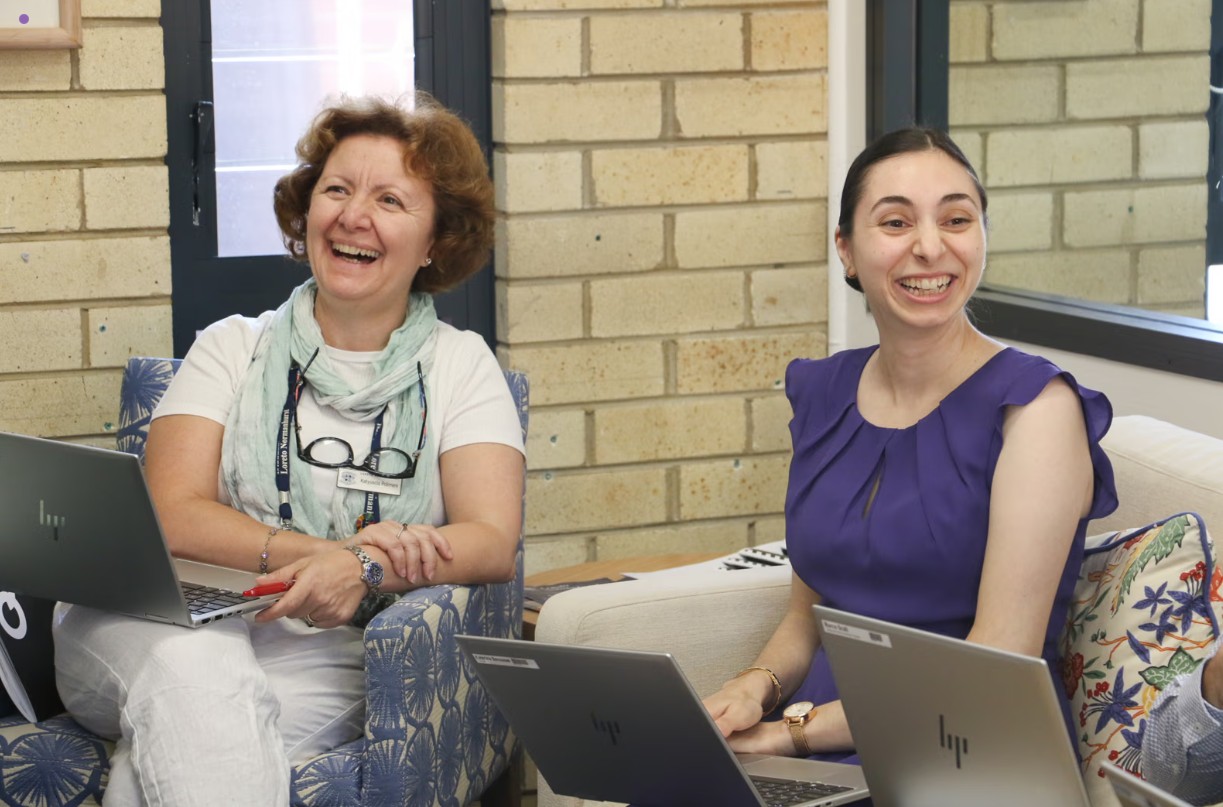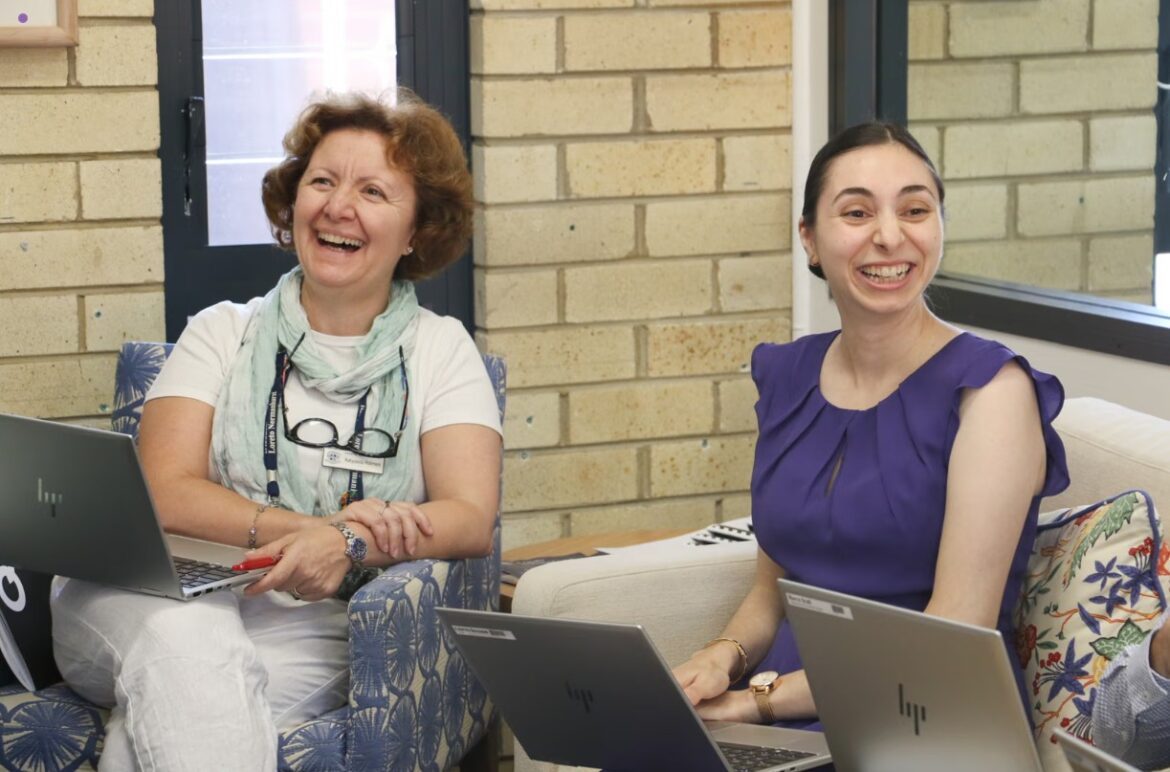
School teachers and leaders across Australia are under more pressure than ever as longer hours, heavier workloads and rising expectations take their toll.
In a UNSW study published in August, more than two-thirds (68.8%) of teachers surveyed described their workload as “largely or completely unmanageable”, with a staggering 90% reporting “severe stress”.
However, research shows many Australian schools still rely on one-off PD days to address burnout, a quick fix that might lift spirits for a day but rarely delivers lasting change.
At Loreto Normanhurst, an independent Catholic, primary and secondary day and boarding school for girls on Sydney’s Upper North Shore, high-quality professional development is deeply embedded within the school’s culture.
In 2023, the school created the ‘Open Learning Circle’ program (OLC) – a unique fortnightly forum for teachers which involves professional learning groups, each made up of between five to eight teaching staff, who focus on an aspect of pedagogy each school term. Focal areas include deep learning, leveraging digital technologies, and social-emotional learning.
‘Wellbeing and learning are two sides of the same coin’
Since the launch of the program, it has provided teachers with a holistic peer support group and a forum to engage in pedagogical creative thinking, and has boosted staff wellbeing across the entire school.
According to the school’s internal statistics, the program has made the learning experiences of 85% of the school’s teachers ‘more meaningful’, with 95% enjoying the refreshingly collaborative approach.
“For our students, wellbeing and learning are two sides of the same coin, and so the model should be no different for teachers,” Marco Scali, Loreto Normanhurst Head of Professional Practice and Growth, told The Educator.
“We would not address the wellbeing of our students in a one-off wellbeing day; we do it everyday as a normal part of our practice.”
Scali said teachers can only bring their best selves to the classroom when their own wellbeing is supported and prioritised throughout the learning process.
“We engineer relationship building whilst students engage in learning activities to build skills and cultivate connection,” he said. “Our approach with our OLCs for staff is no different where we create an opportunity for staff to connect and learn with others.”
A culture of trust and teamwork
Scali said peer observation and feedback through Quality Teaching Rounds – a successful professional development model launched in 2019 that has since expanded nationwide – has changed the way teachers at the school work together.
“Teachers have been working in QTR groups of three or four throughout the year observing each other’s practice and sharing feedback,” Scali said. “This experience itself creates intimacy and trust between the group members because they all take turns giving and receiving feedback against criteria.”
The most unexpected impact on students has been their curiosity in seeing two or three teachers watch their own teacher during normal lessons, Scali noted.
“Students have asked wanting to know why teachers are visiting class and have often been extra attentive during lessons,” he said. “Most of all, it has opened conversations and made visible the concept that teachers learn from and support each other, just like students should do.”
A shared language for quality teaching
Scali said there have been key changes in teacher behaviour at the school – namely an increased familiarity with a clear evidence-based framework for Quality Teaching and the emergence of a common language for best practice.
“The transformation in this space has been the most obvious as staff can now all speak a similar language when discussing the three dimensions and eighteen elements of the QT Model,” he said.
“The impact on retention remains to be seen as 2025 was the debut year of the program but the survey did reveal that many newer staff and early career teachers especially found the experience to be a positive one.”
In terms of reducing stress, the wellbeing aspect of being affirmed by peers in a safe space cannot be underestimated, said Scali, adding that teachers often don’t receive enough praise.
“As for teaching quality, how can it not improve when teachers absorb an evidence-based model of best practice over time?” he said. “Students immediately become the beneficiaries of teachers who are more intentional and informed about what they do.”
Teachers learning with purpose – and joy
When asked what best captures the spirit of the College’s professional growth model, Scali said it’s the sight of teachers eagerly discussing pedagogy.
“In Term 4, groups are deciding on one element of the QT model to experiment with in their practice for the Term,” he said.
“In my OLC group the conversation was focused on which of the elements posed us the greatest challenge and what practical instructional strategies we could use to enhance this element in lessons.”
Scali said the sessions also showcase a culture of genuine collegiality, where teachers engage enthusiastically in shared reflection and lively discussions about best practice.
“Generally, you would find people in good relationship with each other having fun discussing best practice. Each session has concrete activities that facilitate discussion and encourage group work that also leads to task submissions,” he said.
“Ideally, you would see interactions that reflect the best version of collaboration that we would expect from our students- joy-filled, curious, motivated, supportive and open to the ideas of others.”


